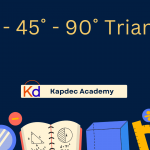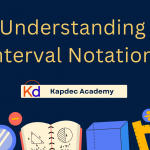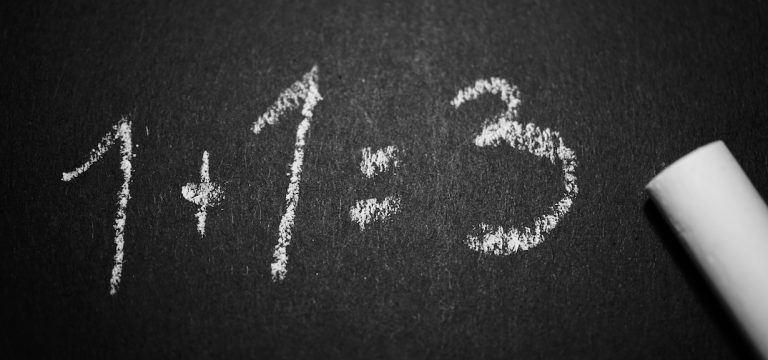For students in New York City preparing for the SAT or AP Math exams(Refer), mastering graphing skills isn’t just a nice-to-have — it’s essential. Whether you’re dealing with linear equations, analyzing quadratic functions, or interpreting real-world data, strong graphing knowledge can make or break your performance. With the competitive landscape of college admissions, especially in NYC, students must leverage every advantage. Graphing is one of those tools.
1. Graphs Are Everywhere on the SAT and AP Exams
The SAT Math section increasingly tests students’ ability to interpret and analyze graphs, often embedding them in real-life scenarios like business trends or population studies. AP Calculus AB and BC frequently ask for sketching derivative or integral-based functions, understanding concavity, and identifying points of inflection—all graph-based. Students who can “see” the math on a graph tend to work faster and avoid algebraic pitfalls.
2. Visual Thinking = Faster Problem Solving
Graphing helps convert complex algebraic relationships into visual representations. Instead of solving a complicated system of equations algebraically, students can plot them and visually identify the solution — often much faster. This is especially helpful under time constraints. In fact, many top-scoring NYC students say that being able to “visualize the question” is what helped them finish faster and more accurately.
3. Real-World Applications Make Concepts Stick
Kapdec, an innovative online tutoring platform serving students in New York and beyond, integrates graphing into real-world problem sets. For example, students learn to interpret graphs representing subway travel times, weather trends in Central Park, or business growth in Brooklyn startups. This contextual learning makes the concept of graphing far more memorable and meaningful than abstract equations alone.
4. AP Exams Demand Deeper Graphical Analysis
In AP Calculus, students are required to understand how the first and second derivatives affect the shape of a graph — a skill that can’t be crammed in the final weeks before the exam. Building a solid graphing foundation early, ideally starting in high school Algebra and Geometry, sets students up for long-term AP success.
AP Statistics, another increasingly popular course among NYC high schoolers, also demands high graph literacy. Bar graphs, box plots, and scatterplots often hide the key to answering interpretation questions. Students who struggle with visual data often misread the question, leading to preventable point loss.
5. Graphing Tools Build Digital Readiness
As more schools transition to digital SAT testing, being comfortable with virtual graphing tools is critical. Platforms like Kapdec offer digital whiteboards and graphing utilities that simulate the test-day experience, allowing students to build confidence and fluency in tech-assisted math work.
FAQ’s
Why is graphing important for the SAT Math section?
Graphing plays a major role in the SAT Math section because many questions involve interpreting or visualizing functions and data. Topics like linear equations, systems of equations, and exponential growth are often tested using graphs. Being able to quickly identify slope, intercepts, or points of intersection on a graph allows students to solve problems more efficiently. For NYC students who are often juggling tight schedules, developing this visual skill can shave valuable seconds off each question — leading to higher scores overall.
Do AP Calculus exams require strong graphing skills?
Yes — in fact, graphing is foundational in AP Calculus AB and BC. Students are expected to understand how derivatives affect the shape of a function (increasing, decreasing, points of inflection, concavity, etc.). You’ll also need to interpret graphical data to evaluate limits or integrals. Without a strong grasp of graphs, even conceptually easy problems can become time-consuming or confusing. Platforms like Kapdec help students build this understanding early, so it becomes second nature by exam time.
Can graphing really help me solve problems faster?
Definitely. Visualizing a math problem — especially one with multiple variables or a system of equations — helps reduce cognitive load. Instead of solving purely algebraically, a well-labeled graph can immediately show where two lines intersect (the solution) or where a function reaches its maximum. This kind of pattern recognition becomes essential during timed exams like the SAT and ACT. Kapdec often uses real-time graphing tools during tutoring sessions to train students to “see the answer” visually.
How do graphing skills apply to word problems and real-world test scenarios?
Many SAT and AP questions are framed as real-world scenarios — tracking distance over time, modeling population growth, or calculating revenue. These problems almost always benefit from a quick sketch or analysis of a graph. For instance, understanding whether a curve is increasing or flattening can help you choose between answer options without needing complex calculations. NYC students can especially relate when examples involve things like subway travel times or local business revenue — both areas where Kapdec contextualizes practice problems.
Is graphing still important now that the SAT is digital?
Yes, and arguably more than before. The digital SAT includes a built-in graphing calculator (Desmos-style), so students need to be comfortable with tech-based graphing tools. Being able to use these tools effectively can offer an edge in interpreting graphs quickly and accurately. Kapdec integrates digital whiteboards and virtual graphing into its lessons, which simulates the real SAT experience and ensures students aren’t caught off-guard on test day.
How does Kapdec specifically help students improve their graphing skills?
Kapdec focuses on building strong conceptual foundations through personalized tutoring, often using NYC-specific data or real-life examples to teach graphing. Whether it’s modeling MTA train schedules or visualizing temperature fluctuations in Central Park, Kapdec’s tutors make graphs meaningful and memorable. They also use interactive tools that allow students to manipulate graphs in real time, reinforcing understanding far more effectively than textbooks alone.
What should I do if I find graphing confusing or hard to visualize?
You’re not alone — many students struggle initially with graphing. The key is to start simple. Focus on understanding basic shapes like lines, parabolas, and exponentials. Use free tools like Desmos, or join platforms like Kapdec that offer guided practice and instant feedback. Drawing by hand helps too; even rough sketches can help you “see” what’s happening. Over time, with regular exposure and practical application, your confidence and accuracy with graph-based questions will grow significantly.
In Conclusion
Graphing is not just another skill in your math toolbox — it’s the backbone of modern problem-solving on standardized tests like the SAT and AP Math. Students in New York City, with access to rich real-world data and advanced learning platforms like Kapdec, are uniquely positioned to master these skills. Start early, practice often, and use visual math to your advantage.







